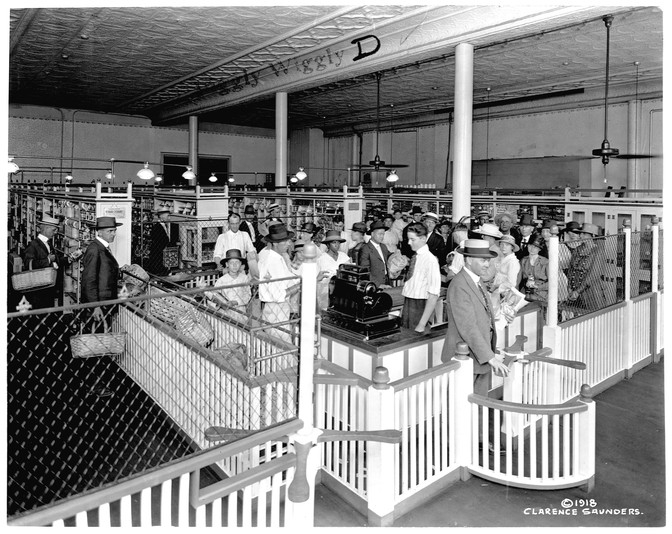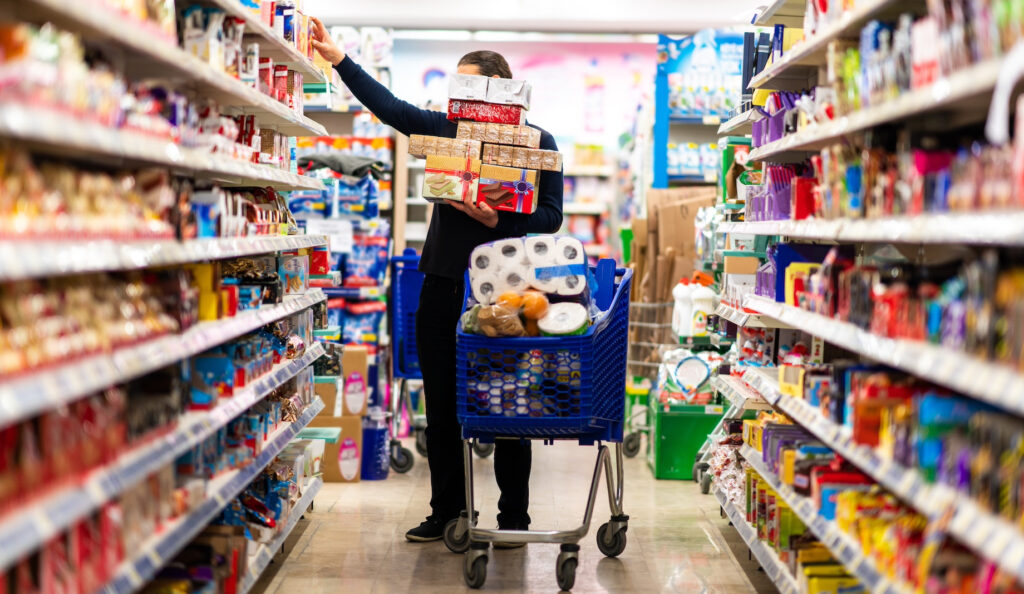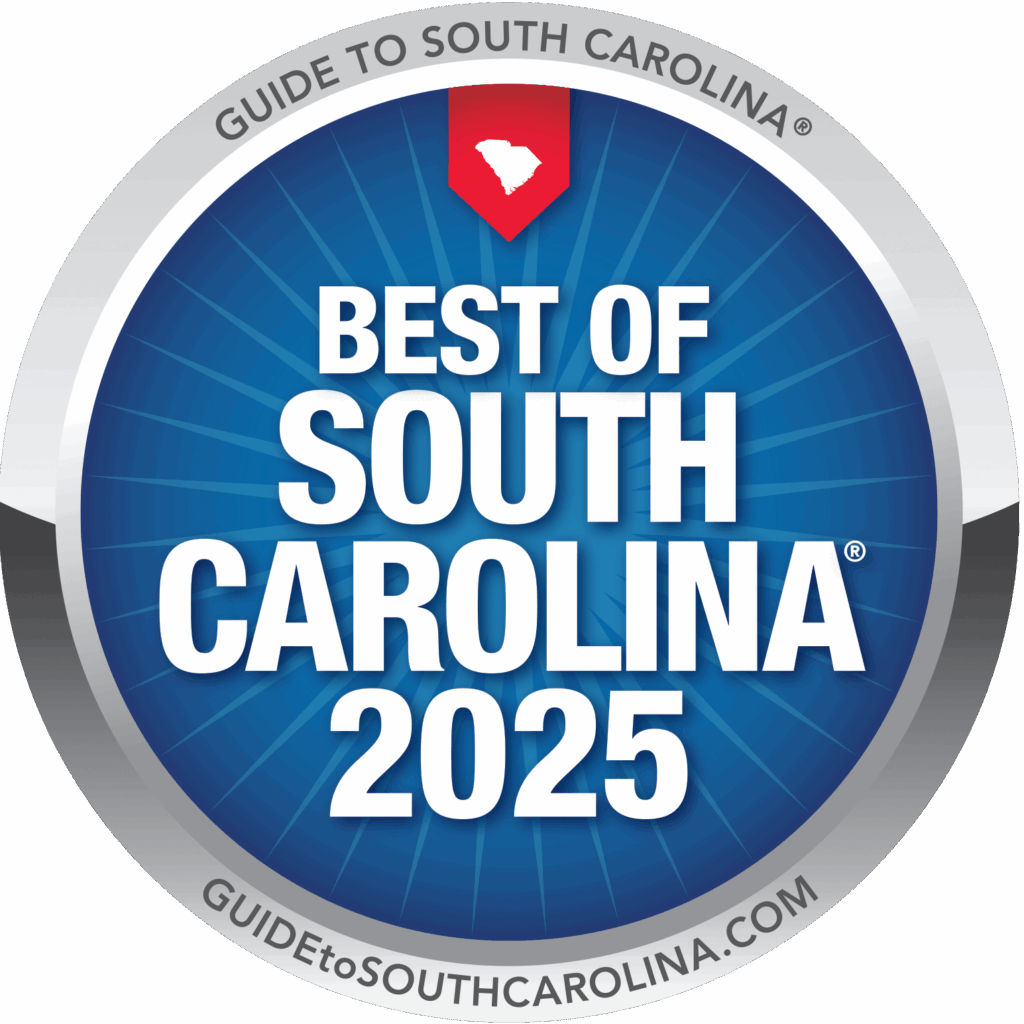
When it comes to grocery stores, the retail experience is pretty similar from brand to brand. You can expect aisles, check-out areas, shopping carts, and foods categorized by genre. However, what we are accustomed to in 2024 has changed dramatically over the years. The evolution of the grocery store—and the associating functions—is quite fascinating.
As students of retail architecture, we love exploring the history and innovation that helped us arrive at the trends we see today.
Basket or Buggy?
The first grocery shopping concept was established in Memphis in 1916 with the iconic Piggly Wiggly. Though it was not large enough to hold a pig (nor was that its purpose), the self-service baskets were a grocery shopper’s only way of collecting their items.
Yes, the grocery basket was effective, but there were still improvements to be made. Once retail grocery leaders realized their customers stopped shopping when a basket was full, they knew a larger and more convenient method was needed.
Introduced in the 1930s, shopping carts revolutionized the way people navigated grocery stores, making it easier to purchase more items. From foldable buggies to a child’s car-like experience attached to the cart, these shopping containers influenced store layouts and designs.

Industry Operations Through the Decades
With the advent of grocery carts, merchants now had a new challenge to explore. Customers could make larger purchases and needed to navigate with efficiency—including the purchasing process. How could merchant organize the store to allow for faster shopping times? How would the items be sold? How could they attract customers to buy products that needed to leave the store before expiration?
Shopping aisles, grocery bags, barcodes, price scanners, and even the introduction of coupons became operational tactics for transforming the shopping experience. We were surprised to discover that the private label for store brand items actually began as early as 1967. Trader Joe’s exemplifies this model artfully with a tactic referred to as “choice hacking” that removes the customer’s tendency to be overwhelmed by too many options.
Emphasizing Technology

In 1986, the first self-checkout came on the scene and since then, the application of technology to the grocery shopping experience has exploded. Can you imagine a world without grocery delivery or online shopping?
Industry experts predict Artificial Intelligence will lead the next wave of technological advances for grocery shopping. Shoppers will likely appreciate the convenience of AI predicting when they might need new items, personalizing sales towards their usual purchases, and the increased efficiency of inventory management.
Despite the advances in technology and even the boom of grocery delivery, we predict physical stores with their social hubs and in person experiences will always hold a position of dominance. Particularly after the isolating impact of the COVID-19 pandemic, humans crave the sense-driven interaction that shopping in a grocery store in person provides.
And when the samples at COSTCO are as good as they are, we (personally) know that to be true.
P.S. – We recently completed a facade design of a Publix grocery store in Millbrook, Alabama. Check out the project recap for details.


